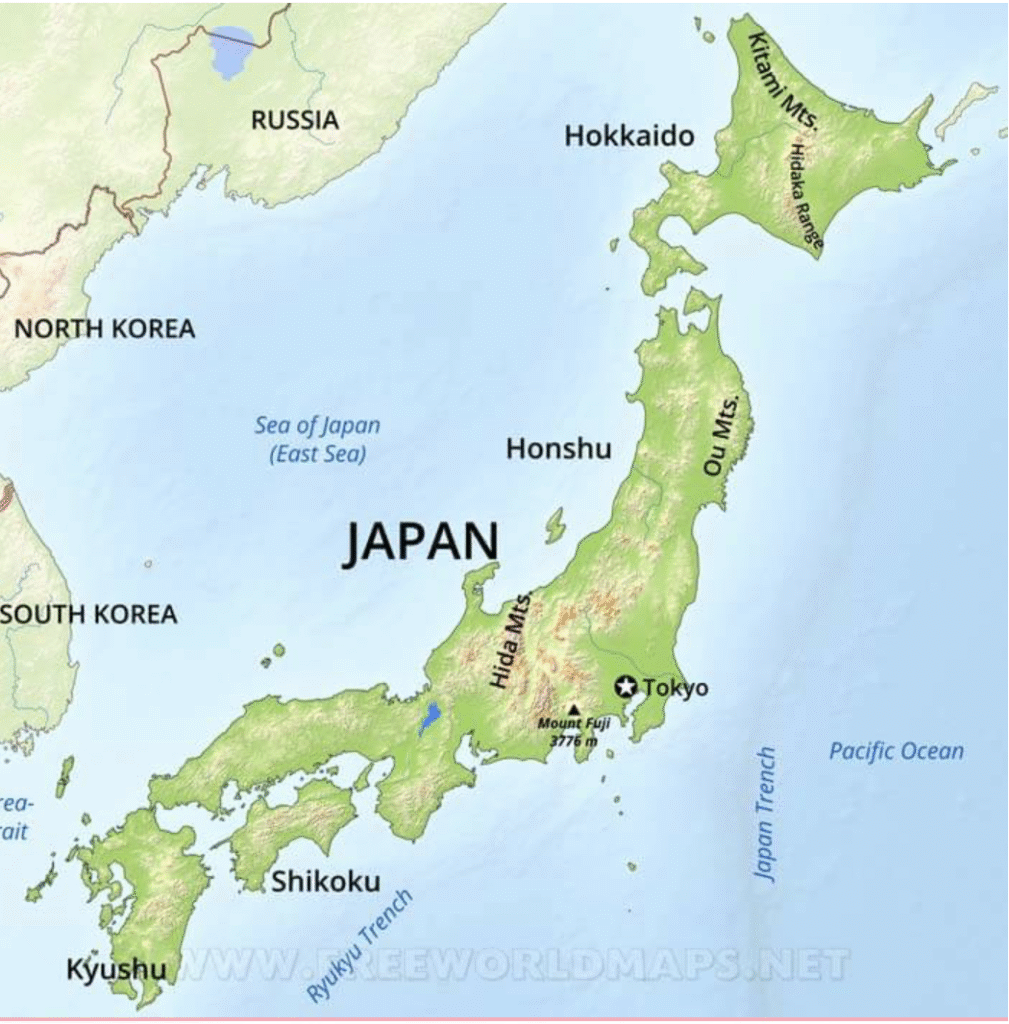Ohayo gozaimas (おはようございます)
(B level – Lesson on verb “Be” and negative of “Be” )
When you ask people what they think about Japan, many times you get a response like “sushi, Mt. Fuji, karate, kimono, udon soup or kimono.” However, there is more to Japan than these words can describe. Japan is a country rich in tradition, culture, and history. Japanese people are very polite, honest, humble and respectful. It is a society that practices good health and eating habits, maintains a very clean environment, utilizes and embraces technology, innovation and modern architecture. They are very hard workers who work long hours in big car companies like Toyota, Nissan and Lexus. Many foreigners who have visited, lived and worked in Japan can testify how hones, patient, polite, hard working and resilient the Japanese people are. These qualities help them live in a country that is constantly faced with danger from earthquakes, tsunami, typhoons, volcanoes and floods, even by its proximity to North Korea. To understand Japan is to understand its history, tradition, and culture, and to understand its people and their affinity to cultural traditions, desire for and exploration of new innovation, technology and architecture, their commitment to hard work, and their resilience and courage to endure extreme natural disasters.


The Verb “Be”
The verb “Be” always agrees with the subject of the verb.
I am a teacher. We are students.
You are a student. They are teachers.
He / She is a student.
It is a school
Short forms of the conjugation of the verb “Be” can be formed by using “contractions with subject pronouns”
Full form Contracted Form Full form Contracted Form
I am I’m We are We’re
He is He’s You are You’re
She is She’s They are They’re
It is It’s
Negative forms of the verb “BE.”
Examples – Explanation
My mother is Filipino. She is not Mexican. Add “not” after the verb “BE” to make a sentence negative.
Marylyn is counselor. She is not a teacher.
My brothers are in the house. They are not outside.
A contraction can be made with the negative form of “BE.
– “I am” has only one form, the others have two.
Full form Contraction 1 Contraction 2 Complement
I am not – I’m not a policeman.
He is not He isn’t He’s not a teacher.
She is not She isn’t She’s not my cousin.
It is not. It isn’t It’s not my car.
We are not We aren’t We’re not at home.
You are not You aren’t You’re not happy.
They are not They aren’t They’re not from Korea.
Uses of the verb “BE”
Verb “Be” is used for many reason: It describes identifies, gives a location, or states a fact.
Examples: The apple is red. / The teacher is Mr. Geraldo. / The book is under the table
The Earth is round.
The verb “BE” is very useful at the beginning states of learning English, and it continues to be useful in all levels of English development.
